Role: Product Designer
LUX Value Proposition
Transforming Client Feedback into Strategic Product Decisions
Overview
Laying the Groundwork for Longtail UX’s Product Strategy and Vision
When I joined Longtail UX, the company was facing challenges with client churn and difficulty acquiring new clients. As one team member put it, “We don’t know what our clients even like about the product.” The company had never conducted structured discovery or client interviews, so my first project was to answer the question:
What do clients value about our product? And why do they leave?
By directly engaging with clients, we identified key needs and pain points, which helped establish a clear product direction. We uncovered a significant gap between the company’s automation-focused vision and clients’ desire for more control, quicker time-to-value, and better scalability. This project became the foundation for several initiatives, including a shift toward a product-led growth strategy, driving product improvements and refining the marketing focus.
Discover
Gathering Insights
Talking to Users
Interviews
We conducted 15 interviews with existing clients to gain a deeper understanding of how they perceived the value of our product and service. The interviews explored:
- The value they currently derived from the product
- Their biggest pain points with SEO and Longtail UX
- Their current workflows and future needs
Competitor Analysis to Differentiate
To inform product decisions, I conducted a competitor analysis to understand Longtail UX’s position in the market. Working with a consultant, I combined research and interviews to identify where we excelled, lagged, or matched competitors.
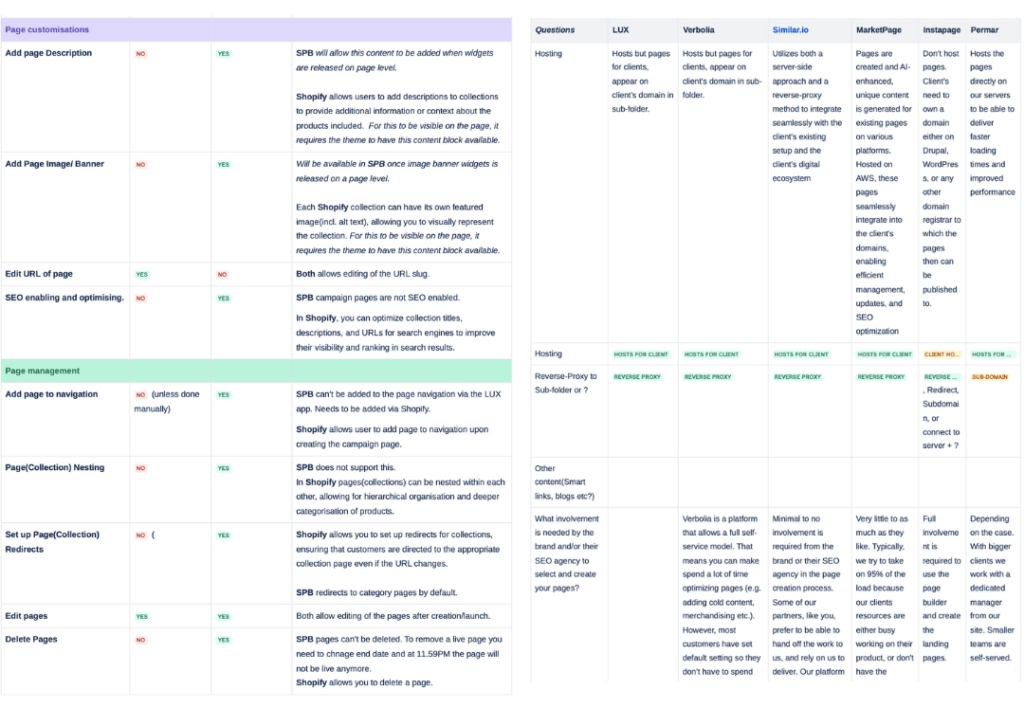
Define and Develop
Key Insights and Focus Areas
Affinity Mapping
We used affinity mapping to organise interview and competitor research findings, uncovering key patterns. To visualise our client base, we created scales— bespoke to app-based products, satisfied to dissatisfied users etc. Plotting clients on these axes clarified:
- Which business types benefited most from our solution
- Common traits of successful clients
- Major gaps and pain points
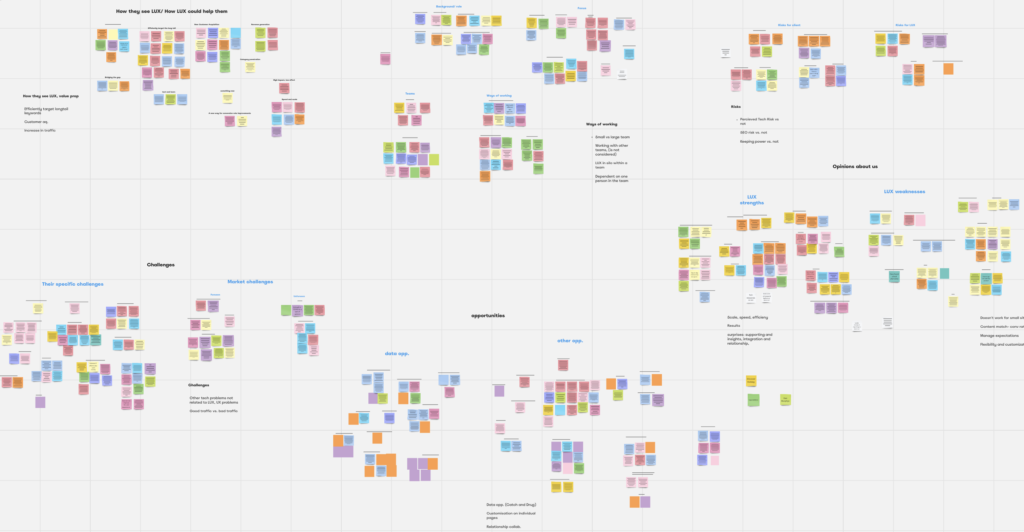
Challenges and Opportunities
Client Needs & Pain Points:
- Time-to-Value Was Too Long – Lengthy onboarding and delayed SEO results slowed clients’ ROI.
- Few Product Touchpoints – Minimal client interaction with the product made it harder to understand ongoing value.
- Manual Processes Limited Efficiency and Scalability – Repetitive tasks and reliance on multiple tools reduced productivity and growth potential.
- Inflexible User Control – Users wanted more flexibility without added complexity or manual effort.
The problem we identified
Through discovery, we identified critical pain points with LUX and the challenges in managing pages. This led to a clear problem definition:
“Managing and scaling SEO landing pages is fragmented, time-consuming, and inefficient, relying on manual processes across multiple tools and teams. This complexity delays results, creates inconsistent outcomes, and prevents repeatability, limiting business growth and marketing effectiveness.”
Defining Personas, JTBD, and ICP
Understanding our users and the problems they face gave us a clear direction: to build something valuable, we needed to align our product with their needs. We developed personas, Jobs to Be Done (JTBD), and an Ideal Customer Profile (ICP) to guide both the product and go-to-market strategy.
The ICP helped us focus on medium-to-large eCommerce businesses with large product catalogues and significant revenue, refining our marketing and feature prioritisation. While we developed personas to represent user traits, the company misunderstood them as fixed categories, which created challenges. We adapted by shifting to a more flexible approach, using JTBD and ongoing user feedback to guide decisions based on evolving insights.
JTBD helped us focus on the key outcomes users valued, such as reducing the time and effort spent on managing multi-product pages while gaining more control over the process. This phase clarified exactly who we were building for and why, helping us shape a product that balanced efficiency with user control.
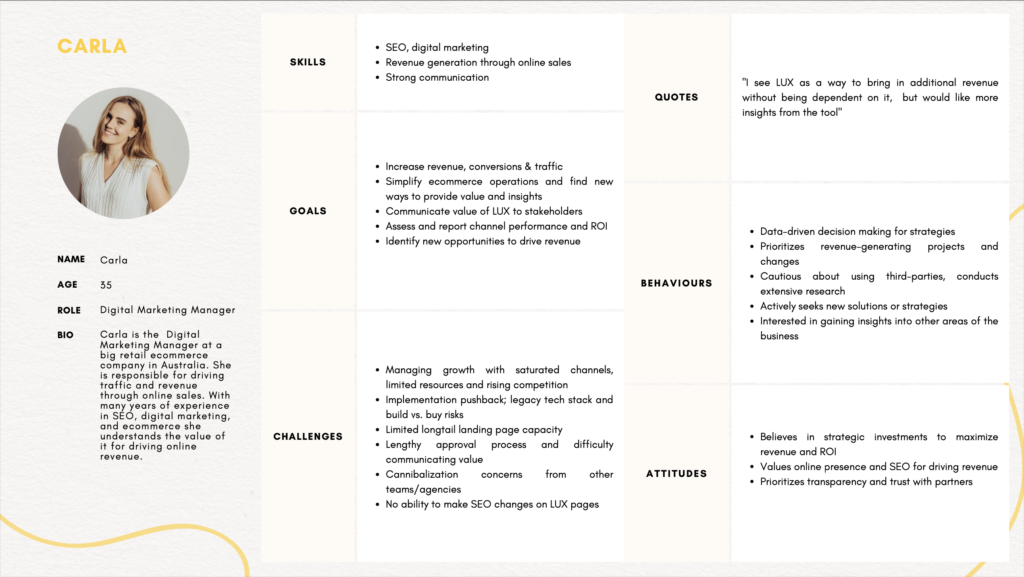
strategy
Strategic Prioritisation and Vision
The New LUX Vision
Our vision is to become a no-code website automation platform that identifies and executes multi-product page opportunities, helping brands expand their reach. With fast, same-day integration and rapid go-to-market technology, we enable marketing teams to acquire customers, uncover insights, and drive market share growth at speed.
We presented our findings to align teams around the updated ICP and product direction. To inspire a shared vision, we created a “Storyboard of an Ideal Day,” showing how streamlined onboarding and better product touchpoints could boost client satisfaction and engagement.
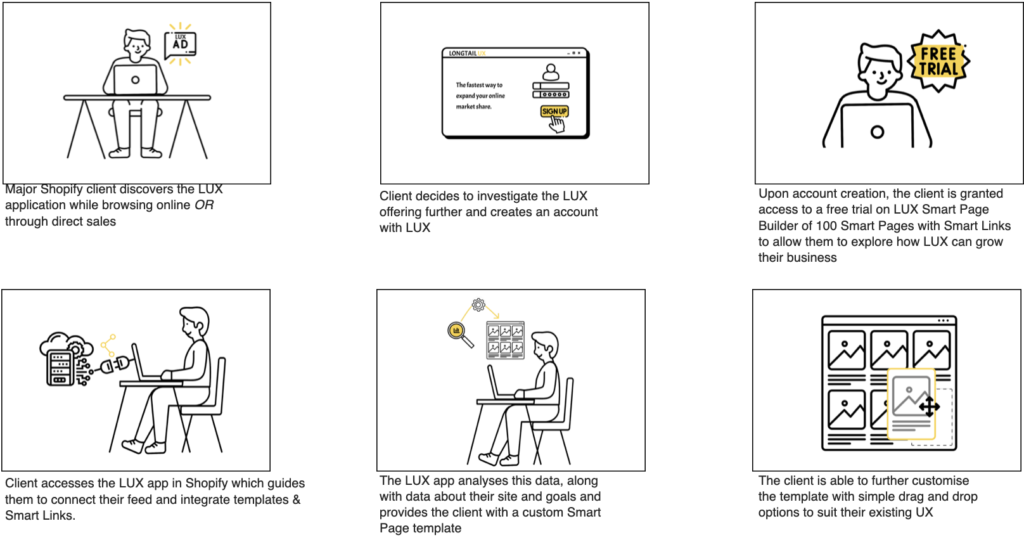
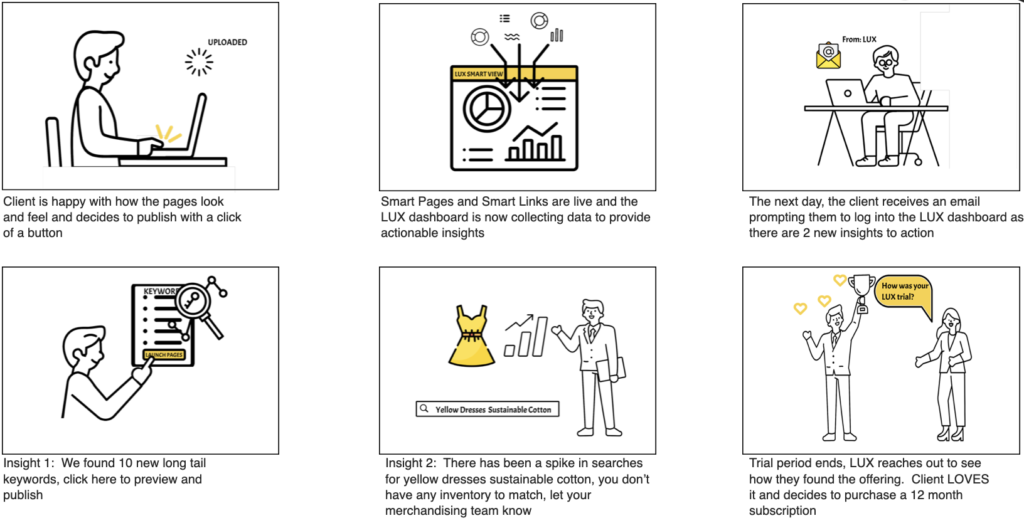
3 Horizons framework
- Horizon 1: Immediate wins, like creating the first iteration of LUX Self Serve App.
- Horizon 2: Differentiators, One-click integration and nested attribute rules, added to the roadmap.
- Horizon 3: Long-term innovations for leadership.
This structured approach helped align our roadmap with both short-term needs and future ambitions, keeping Longtail UX competitive and primed for growth.
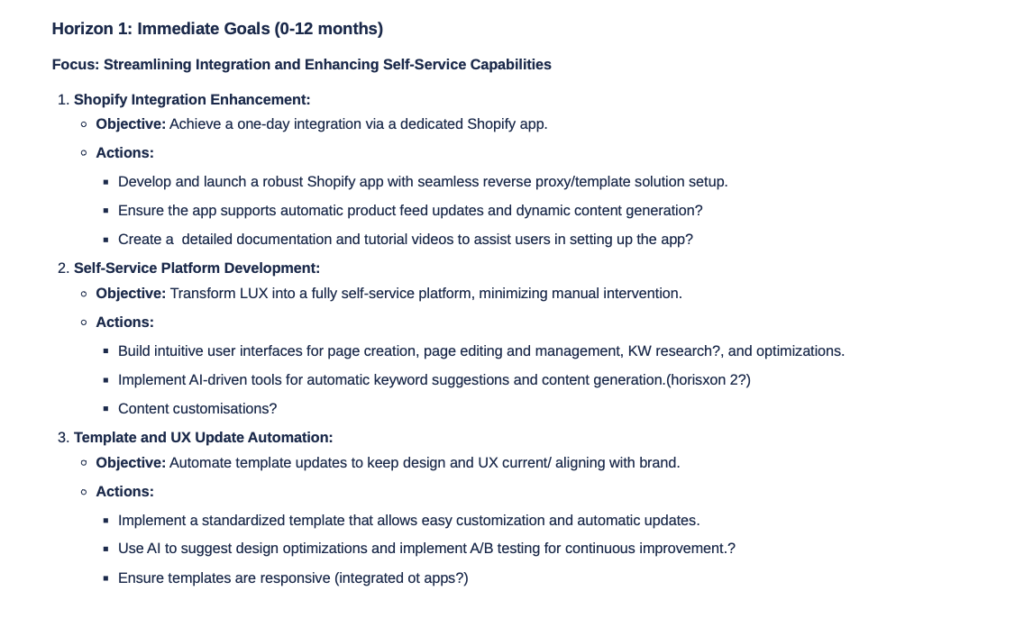
From Strategy to Action: Transformative Projects for User-Centered Growth
With a clear understanding of our users, their needs, and strategic initiatives, we initiated several transformative projects that focused on addressing key challenges and driving significant impact for the product and users.
- Self-Service App for Page Management – Empowering users to manage pages directly with a user-friendly interface.
- Shopify App for Seamless Integration – Simplifying onboarding with a one-click solution, reducing time-to-value.
- Refined Ideal Customer Profile (ICP) – In addition to maintaining our focus on medium-to-large enterprises, we narrowed new customer targeting to Shopify businesses, where we saw a growing market and existing users.
- Automated Internal Tasks – Reducing manual work and enabling faster scalability.
Key Takeaways
Involving Cross-Functional Teams Strengthens Discovery
We noticed initial hesitation from some team members about engaging with clients directly, fearing it might damage relationships. To address this, we included them, along with engineers, as observers in the client interviews. This helped them better understand the why behind our product decisions. Involving cross-functional teams in discovery aligned everyone on our choices, ensuring a more collaborative, user-centered approach.
Flexibility in Approach. Not all concepts work for every organisation. For example, while personas are widely used in many contexts, they didn’t resonate here and were replaced by a more flexible approach with Jobs to Be Done (JTBD). It’s important to recognise when something isn’t working and be open to adapting methods to better suit the team and product.
Importance of a Shared Product Vision. The longer we worked on the project, the more apparent it became that a lack of clarity in the product vision led to teams heading in different directions. Having a shared vision across the business was crucial to aligning efforts and driving consistent outcomes.
